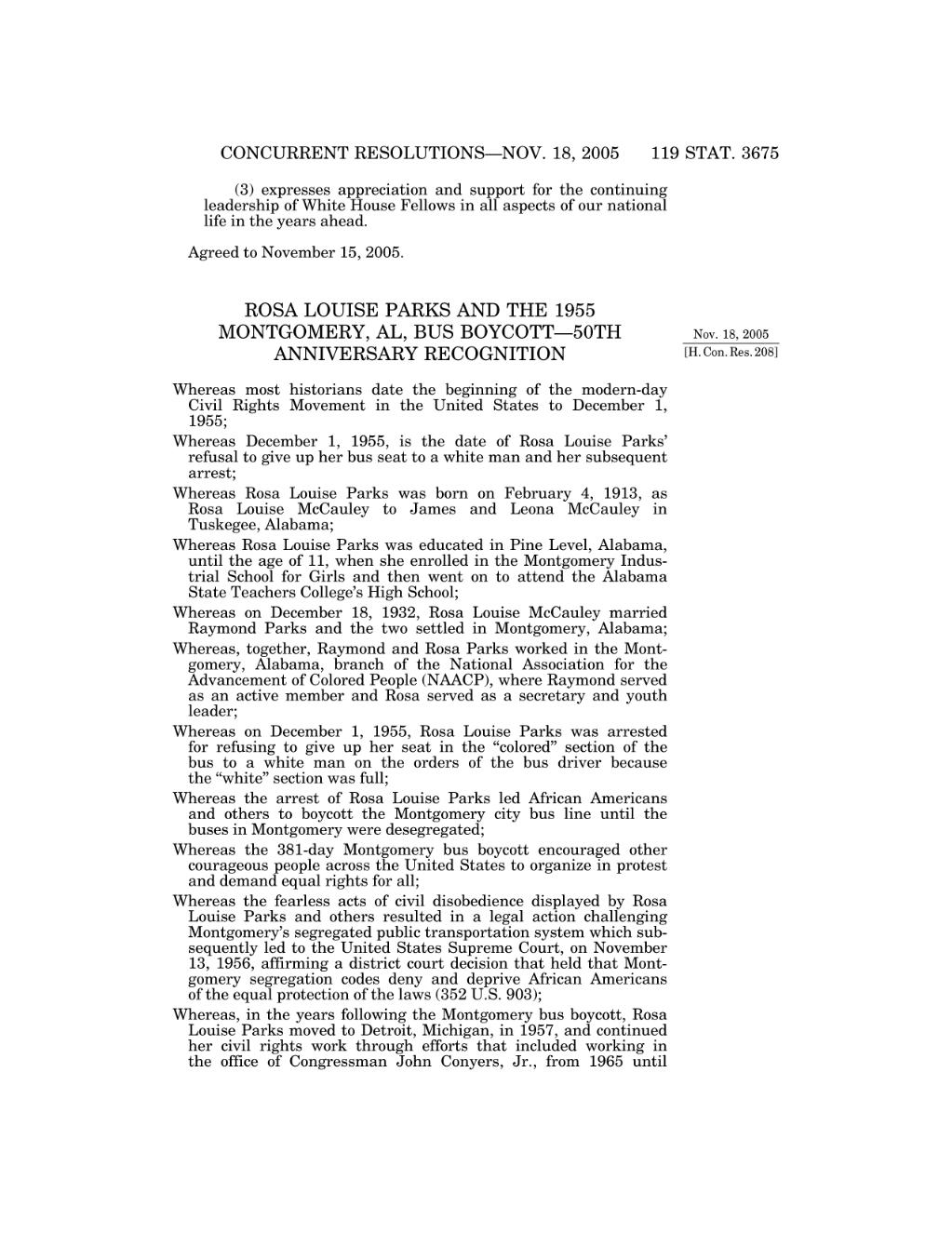CONCURRENT RESOLUTIONS—NOV. 18, 2005
119 STAT. 3675
(3) expresses appreciation and support for the continuing leadership of White House Fellows in all aspects of our national life in the years ahead. Agreed to November 15, 2005.
ROSA LOUISE PARKS AND THE 1955 MONTGOMERY, AL, BUS BOYCOTT—50TH ANNIVERSARY RECOGNITION
Nov. 18, 2005 [H. Con. Res. 208]
Whereas most historians date the beginning of the modern-day Civil Rights Movement in the United States to December 1, 1955; Whereas December 1, 1955, is the date of Rosa Louise Parks’ refusal to give up her bus seat to a white man and her subsequent arrest; Whereas Rosa Louise Parks was born on February 4, 1913, as Rosa Louise McCauley to James and Leona McCauley in Tuskegee, Alabama; Whereas Rosa Louise Parks was educated in Pine Level, Alabama, until the age of 11, when she enrolled in the Montgomery Industrial School for Girls and then went on to attend the Alabama State Teachers College’s High School; Whereas on December 18, 1932, Rosa Louise McCauley married Raymond Parks and the two settled in Montgomery, Alabama; Whereas, together, Raymond and Rosa Parks worked in the Montgomery, Alabama, branch of the National Association for the Advancement of Colored People (NAACP), where Raymond served as an active member and Rosa served as a secretary and youth leader; Whereas on December 1, 1955, Rosa Louise Parks was arrested for refusing to give up her seat in the ‘‘colored’’ section of the bus to a white man on the orders of the bus driver because the ‘‘white’’ section was full; Whereas the arrest of Rosa Louise Parks led African Americans and others to boycott the Montgomery city bus line until the buses in Montgomery were desegregated; Whereas the 381-day Montgomery bus boycott encouraged other courageous people across the United States to organize in protest and demand equal rights for all; Whereas the fearless acts of civil disobedience displayed by Rosa Louise Parks and others resulted in a legal action challenging Montgomery’s segregated public transportation system which subsequently led to the United States Supreme Court, on November 13, 1956, affirming a district court decision that held that Montgomery segregation codes deny and deprive African Americans of the equal protection of the laws (352 U.S. 903); Whereas, in the years following the Montgomery bus boycott, Rosa Louise Parks moved to Detroit, Michigan, in 1957, and continued her civil rights work through efforts that included working in the office of Congressman John Conyers, Jr., from 1965 until
VerDate 11-MAY-2000
13:23 Oct 26, 2006
Jkt 039194
PO 00000
Frm 00055
Fmt 9796
Sfmt 6581
C:\STATUTES\2005\39194PT3.002
APPS10
PsN: 39194PT3
�
